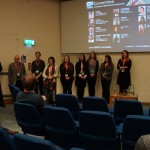Evaluation of low cost consumer grade UAS systems for 3D reality capture and mapping
Abstract
Evaluation of low cost consumer grade UAS systems for 3D reality capture and mapping
Dietmar Backes, Oliver Teasdale
Commonly referred as drones, small remotely piloted aerial systems (RPAS) as used by hobbyist have rapidly developed into quite capable low cost Unmanned Aerial Systems (UAS). The fast advances of the technology and the decrease in price of major enabling components in recent years have blurred the boundary between the professional sector and inexpensive consumer grade systems produced for hobby enthusiasts.
Especially multirotor vertical take-off and landing (VTOL) UAS have proven to be versatile and flexible platforms which can be equipped with a range of sensors capable to capture aerial data for a variety of 2D and 3D mapping applications. Whilst the more professional systems are capable of carrying sophisticated light weight multispectral and hyperspectral passive aerial imaging systems as well as active LiDAR sensors, small hobby drones only have a limited payload for light imaging sensors. Inexpensive, light weight but robust “action cameras” which are able to acquire video feeds but also RGB and near infrared imagery like the models from GoPro are widely adopted in this class. Using the state-of-the-art structure from motion (SFM) algorithms, 3D point clouds can be derived from such imagery.
This paper reviews the current capabilities and features of major professional as well as amateur systems. It reviews the capabilities of the DJI’s Phantom Mark 3 Quadcopter which is easy and flexible to operate and contains simple flight planning tools and a 12megapixel gimbal mounted camera. We show the workflow from flight planning, data collection up to dense pointclould matching using a variety of commercially available and open source software tools. However how accurate are the results? The resulting point clouds are evaluated and bench marked using a highly accurate and dense reference data acquired via geodetic terrestrial survey and Laserscanning. The results of this evaluations allows conclusions on the current accuracy capabilities of this such low cost systems.
Conference
2015 GRSG AGM - Challenges in Geological Remote Sensing





